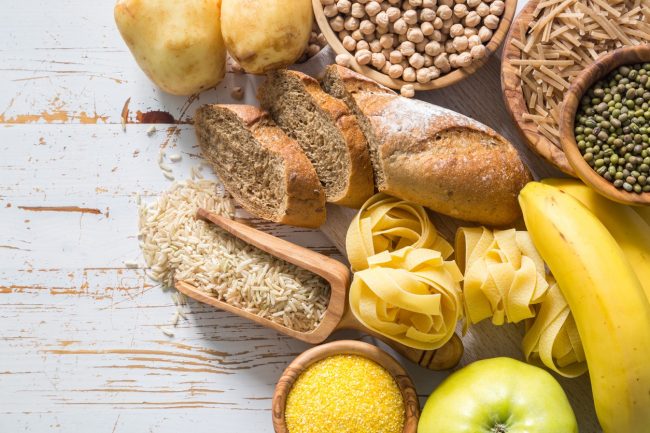By now, it’s well-known that if you want to maintain weight loss or your already-svelte figure, you’d better tone down the white bread, pasta and all sorts of delicious carbohydrates. But are carbs bad?
They’ve mistakenly earned a bad reputation. Rest assured, not all carbs are created equal. In fact, incorporating the right types breads and noodles into your diet can help you maintain a healthy weight and kick those hunger pains to the curb.
Certified nutritional therapist Chelsea Blackbird advises, “Consuming carbs responsibly helps create dietary sustainability. Any time we cut out a major macronutrient, it makes it hard to sustain long term. This leads to yo-yo dieting.”
Carbohydrates: simple or complex?
Blackbird’s point: You don’t have to starve to maintain a healthy weight and feel great. When reaching for a carb-loaded snack, choose wisely. The right kinds of carbs are your main energy source and help fuel your brain. As co-authors Brooke Alpert, MS, RD, CDN and Patricia Farris, MD, FAAD explain in their book, “The Sugar Detox,” carbs can be classified into two groups: simple and complex.
Complex carbohydrates are the gold standard and include:
Your body breaks down complex carbohydrates slowly, causing less of a surge in blood sugar. Because they contain fiber, they also help you feel fuller longer.
Steer clear of processed and refined simple carbs, including candy, soda and syrups. Your body breaks down these foods quickly, leading to a blood sugar spike. And because they lack any real nutritional value, you’ll feel hungry again before you know it.
Unrefined, simple carbs in moderation, such as fruits and milk, are a better choice. Alpert and Farris recommend making whole grains and whole fruits – in healthy portion sizes – a regular staple in your diet.
Grains for days
Pay attention to the grains you’re consuming, too. According to “The Sugar Detox,” Americans are eating an average of 11 servings of grains — mostly refined grains low in fiber — per day. Refined grains are basically, “sugar in disguise,” the book describes. These refined grains have had the fiber stripped from them. Think white rice, white flour, many cereals, crackers, breads and desserts.
So the next time you’re tempted to reach for the cinnamon-sugar cereal, select one of these unrefined whole grains, instead:
- Brown rice
- Quinoa
- Buckwheat
- Popcorn
- Oatmeal
Because they haven’t gone through the refining process, these grains retain their nutritional value and give you a healthy dose of vitamins, fiber, iron and more.
Resistant starch to the rescue
For added benefit, Blackbird advises selecting carbs that contain resistant starch (RS), which is a dietary fiber that resists digestion. The digestive system can’t fully break down RS, so the body uses it as a prebiotic. What are prebiotics? They’re a source of fuel for the good bacteria found in your gut.
As Blackbird explains, healthy gut bacteria improve metabolic, immune and cardiovascular functions, adding that RS also helps you feel satiated between meals. All healthy carbs, including those with RS, balance leptin signaling. Leptin is the hormone that tells the brain you’re full and to stop eating. Bonus: resistance starches boost serotonin levels to help you get a good night’s sleep.
Cooler carbs are better
Blackbird suggests eating up to one cup of foods high in RS each day. Oats, legumes, potatoes, slightly green bananas and rice get the RS seal of approval.
To really pack a punch, Blackbird says it’s best to cook these foods (except bananas) and then let them cool slightly before eating. Though it may seem strange, it works. A study published in 2015 in the Asia Pacific Journal of Clinical Nutrition found that the cooling of cooked white rice increased its resistant starch content through a process known as retrogradation, where starch chains interact to form a more ordered molecular structure.
If eating a green banana turns your stomach, or if you just don’t have time to cook, Blackbird has a time-saving hack: add a tablespoon of unmodified potato starch to your morning smoothie. You won’t notice the taste, but you’ll surely feel the difference when you can skip that mid-morning snack.
Blackbird says people forget that carbs can be full of nutrients the body needs to fuel a healthy metabolism.
Omitting carbs completely or limiting them in your diet can lead to low energy, brain fog or worse. But keep the right complex carbohydrates on your plate, and your body will thank you.

